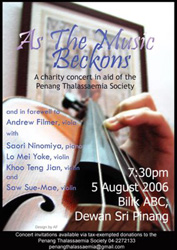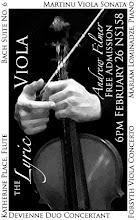
1. Oistrakh (red): For violin playing, the use of the index finger on the bow and the use of the weight of the arm are not mutually exclusive – even in the classic Russian method, Oistrakh commented on the use of the weight of the upper arm in producing great projection. For viola playing, the use of the index finger is less or done away entirely, perhaps leaning to the middle finger use of the cello.
2. Primrose (yellow): William Primrose, the most famous violist in modern times, and known for his immense sound, told David Dalton that to him the distinction between arm weight and back muscle use was too difficult to pin-point, and that his pedagogical approach was to suggest that there was a hole in the floor, through which a rope was tied to your elbow, and while you played, a small man was pulling on the rope as would be a bell ringer.
3. Vangerov (dark blue): If photos and comments are any indication Vangerov leans far back when playing, likely so that the internal center of gravity allows easier arm weight. It is a good thing to try – I have found it useful, but I can’t sustain such a position without hurting my back.
4. Pedagogues I have met: Lim Soon Lee (light blue) suggests thinking of an outer ring encircling the arm – from the back muscles to the little finger, keeping playing as open as possible. Also, to have an imaginary wall, in which to push your upper arm against, and a complex balance of “float” and “lean” of the arm (see the next item). Ajarn Choochart Pitaksakorn suggests exercises in raising the arms and totally releasing them to feel natural arm weight – not a planned drop of the arms, but a real relaxed release. This is not shown in the picture because it is done without the instrument or bow.
5. Just me: I think that arm weight is the most accessible method in tone production and to understand the “float-lean” concept, one can go to a pool and feel the natural float of the arm because of water tension, even while leaning against the water. While you’re there, try out freestyle or backstroke, and try it once concentrating on NOT using your back muscles, and then stop, and try it again, more naturally. The same concept applies to using back muscles in violin playing.






1 comment:
การสร้างโทนเสียงที่คุณสมบัติต่างๆ กันจะต้องโฟกัสไปที่การใช้คันชักและแขนขวา ไม่ว่าจะเป็นกล้ามเนื้อและจุดหมุนต่างๆ เราสามารถสร้างเสียงที่ “นุ่มนวลไม่แข็งกระด้าง (Warm)”, “เสียงเปิดและใหญ่ (Open and Big)” แต่ทั้งนี้ไม่ใช่ความหมายเดียวกับ “เสียงดัง (Loud)” แต่เสียงที่เปิดและใหญ่มีคุณสมบัติในเชิงกำลังการส่งของเสียงซึ่งไปได้ไกล (Projection) คนที่นั่งอยู่หลังห้องหรือยืนที่ไกลๆ จะได้ยิน
ต่อไปนี้จะได้อธิบายเทคนิคการใช้แขนขวาของนักไวโอลินระดับโลกที่เด่นๆ แต่ละคน
1. Oistrakh (เส้นสีแดง) : ในการเล่นไวโอลินโดยปกติแล้วการสร้างแรงกดที่คันชักมักใช้แรงกดที่นิ้วชี้หรือการใช้น้ำหนักของแขนอย่างใดอย่างหนึ่งเท่านั้น สำหรับ Oistrakh เขาแนะนำให้ใช้น้ำหนักของแขนท่อนบนในเพื่อให้เกิดกำลังส่งของเสียงที่ดี (Projection) สำหรับการเล่นวิโอล่ามักไม่ค่อยใช้แรงกดที่นิ้วชี้มากนัก ส่วนเชลโลเค้าจะเน้นไปที่ทิ้งกลางมากกว่า
2. Primrose (เส้นสีเหลือง) : วิลเลียม พริมโรส เป็นนักวิโอล่าที่มีชื่อเสียงที่สุดคนหนึ่งในยุคหลังๆ นี้ เขามีชื่อในเรื่องน้ำเสียงการเล่นที่เปิดกว้างและใหญ่ เขาบอกว่า สำหรับเขาเค้าแยกความรู้สึกหรือความแตกต่างของการใช้น้ำหนักแขนและการใช้กล้ามเนื้อหลังไม่ได้ชัดเจนนัก แต่เขาใช้วิธีจินตนาการว่ามีรูอยู่บนพื้นและมีเชือกเส้นหนึ่งมาผูกที่ข้อศอกโยงลงไปในรูนั้น และมีใครสักคนดึงเชือกอยู่ใต้พื้นนั้น เหมือนๆ การดึงเชือกสั่นระฆัง
3. Vengerov (เส้นสีน้ำเงิน) : เขามักเล่นโดยเอียงตัวไปด้านหลัง เหมือนกับขยับจุดศูนย์ถ่วงของลำตัวเพื่อให้ใช้น้ำหนักของแขนได้ดีขึ้น นี่เป็นเทคนิคที่น่าลอง ผมพบว่าใช้ได้ผลดีแต่มีปัญหาตรงที่ถ้าเล่นในท่านี้นานๆ มักจะปวดหลัง
4. บรรดาอาจารย์ของผม :
Lim Soon Lee (เส้นสีฟ้า) : เขาแนะนำว่าให้จินตนาการลากเส้นโค้ง (ส่วนหนึ่งของวงกลม) ในวงรอบแขน เริ่มจากกล้ามเนื้อด้านหลังมาถึงนิ้วก้อย และให้เล่นเปิดมากที่สุดเท่าที่จะทำได้ อีกอย่างคือจินตนาการว่าท่อนแขนด้านบนดันกับกำแพงเพื่อให้ได้สมดุลย์ในเรื่องของการยก (float) และการเอียง (lean) ของแขน
อาจารย์ชูชาติ พิทักษ์สาคร : แนะนำให้ฝึกยกแขนขึ้นทั้งสองข้าง (วางไวโอลินกับคันชักก่อนนะ) แล้วทิ้งแขนลงแบบปล่อยตามธรรมชาติไม่ต้องบังคับให้ตกลงมาทางนั้นทางนี้ แค่ปล่อยให้มันตกลงมาโดยไม่บังคับอะไรเลย เพื่อให้รูสึกถึงน้ำหนักของแขนตามธรรมชาติ
5. สำหรับผมเอง : การสร้างโทนเสียง ผมคิดว่าวิธีการใช้น้ำหนักแขนและการเข้าใจหลักการ “การยกและการเอียง” เป็นเทคนิคที่ทำได้ง่าย ถ้าใครทำได้ลองไปที่สระว่ายน้ำลงน้ำแล้วให้รู้สึกถึงการลอยอย่างเป็นธรรมชาติจากแรงพยุงของน้ำ ลองว่ายท่าฟรีหรือกรรเชียงโดยไม่ใช้กล้ามเนื้อหลังดูว่ารู้สึกอย่างไร จากนั้นค่อยลองว่ายแบบตามปกติธรรมชาติ เทคนิตการใช้กล้ามเนื้อหลังนี้แหละที่ใช้กับการเล่นไวโอลิน
ลองอ่านเรื่อง Stringstorming ดูเผื่อจะมีประโยชน์นะ (ดูตรง Side Bar)
มุกุ
Post a Comment